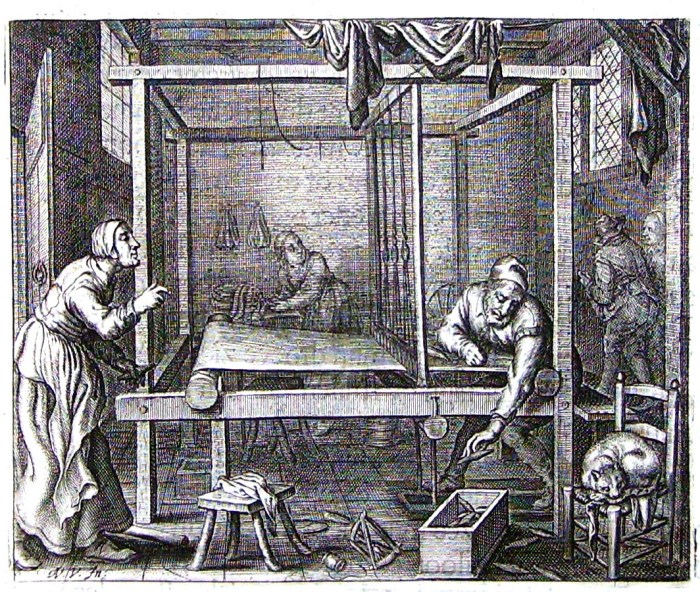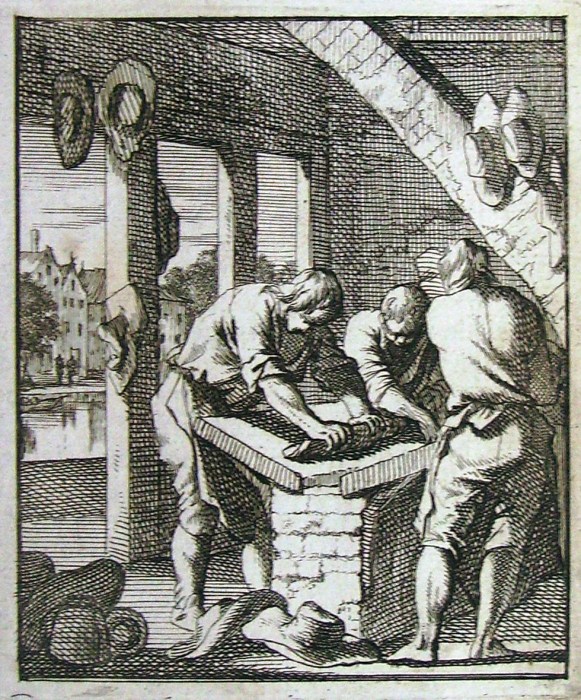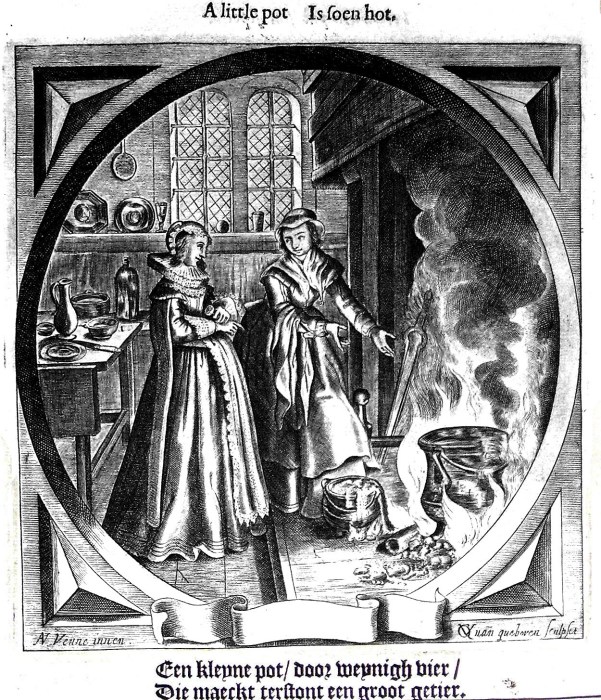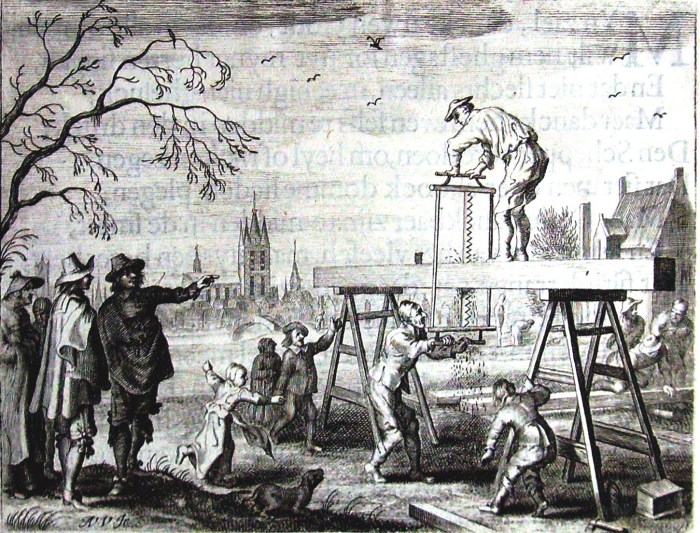
The members of the Pilgrim congregation in Leiden worked in many different professions and trades. Leiden's trade guild regulations were less restrictive than those of Amsterdam, where most immigrants were excluded from all but occasional labor, such as unloading ships. In Leiden a single guild member could hire helpers who were not members.
For example, William Bradford, a member of the fustian- or serge-weavers' guild which met in the former chapel of the St. Jacob's Hospital (now the Lodewijkskerk), could thus employ other Pilgrims who were not guild members. About half the Pilgrims worked in Leiden's cloth industry - as weavers, wool combers, carders, cloth-fullers, etc. At this time, about half the town's general population worked in textile production.
Occupations are mentioned in various kinds of documents, especially betrothal records. The occupations known for members of Robinson's congregation include: tailor, hatmaker, glover, hosierer, shoemaker, carpenter, block and tackle maker, twine maker, leather-worker, cooper, cabinetmaker, brewer's employee, mason, watchmaker, mirror-maker, tobacco seller, tobacco-pipe maker, midwife, and merchant. The occupation of housewife and mother is not specifically mentioned in the documents and must have been considered self-evident.

Rev. John Robinson was a graduate of Corpus Christi College, Cambridge. In Leiden he enrolled in 1615 as a member of the University, where he became a friend of the theologian Johannes Polyander, the Leiden professor who supervised translation of the Old Testament for the Staten Vertaling (States' Translation, the Dutch equivalent of the King James Version).
Robinson, a professional scholar, attended theology lectures, supporting the Contra-Remonstrants against the Arminians in the heated debates of that controversial period. Robinson's neighbor and friend Thomas Brewer, who financed the Pilgrims' publishing activities now known as the Pilgrim Press, also was inscribed as a "student" of the University in 1615.
Although not enrolled as a "student," William Brewster, a former Cambridge student and the leading active partner in the Pilgrims' publishing, also had academic contacts in Leiden, teaching English to university students. Edward Winslow assisted Brewster as a type-setter.

William Jepson was a carpenter. Together with John Robinson, Henry Wood, and Jane White (represented by her husband Raynulph Thickens). Jepson was a co-purchaser of the property across the street from the Pieterskerk, called "De Groene Poort"("The Green Close," sometimes romantically misnamed "The Green Gate"), which became Robinson's house, and in whose garden a dozen small houses were built for other members of the congregation.
No doubt Jepson was involved in the construction of these house. Jonathan Brewster was a merchant who produced ribbon, that he exported to England. Samuel Fuller, the Pilgrims' physician in Plymouth Colony, was a serge-weaver in Leiden. Myles Standish, the colony's future military leader, was a soldier. Nicholas Claverley was one of Leiden's first tobacco-pipe makers, involved with other Englishmen in the tobacco trade that could be found wherever English soldiers were garrisoned.
Isaac Allerton, later to become well-known as a merchant and Plymouth Colony's representative in England, was a tailor in Leiden, a trade he had learned in London. An interesting notarial deposition specifies the amounts of cloth and braid he used in making a reddish-grey cloak for Nicholas Claverly. The decoration included about 54 yards of gold cord; the collar was decorated with grey satin, with canvas for stiffening the silk on the ruff.

Degory Priest, another Pilgrim who was himself a hatmaker, witnessed the document, signing with a mark. This indicates that he, in contrast to Allerton, was probably unable to write. Allerton took on an apprentice, John Hooke, in 1619, when Hooke was twelve years old. He was to learn to be a tailor, but after arrival in America in 1620 the boy died in the first winter. Another apprentice was Robert Hagges, who was learning serge weaving from Edward Tilley starting around 1616.
The Pilgrims' midwife was Sarah Willett, who was married first to William Minter; then after Minter's death, to Roger Symonson; and, again widowed, to Roger Eastman. Grietgen (Gertie) Savory was a servant of Thomas Brewer's. The other women are not identified by occupation, but no doubt many of them helped in weaving and other trades. Although many Pilgrims were poor, others had money, education, and some connections within Leiden's academic and merchant society.
The clothing that the Pilgrims wore must have varied according to social rank and occupation. Some undoubtedly wore typical work-clothes; others wore the clothes of the middle class, as is clearly indicated by the document about the cloak made by Isaac Allerton.
The Pilgrim’s rich and exciting story deserves to be told in detail. You can discover different aspects of it in the following chapters.